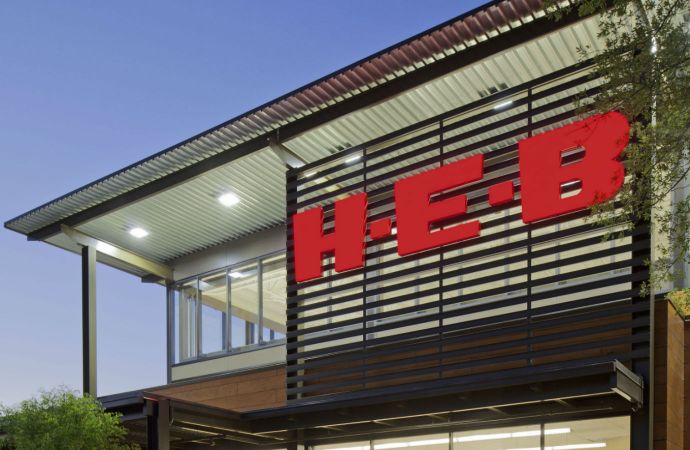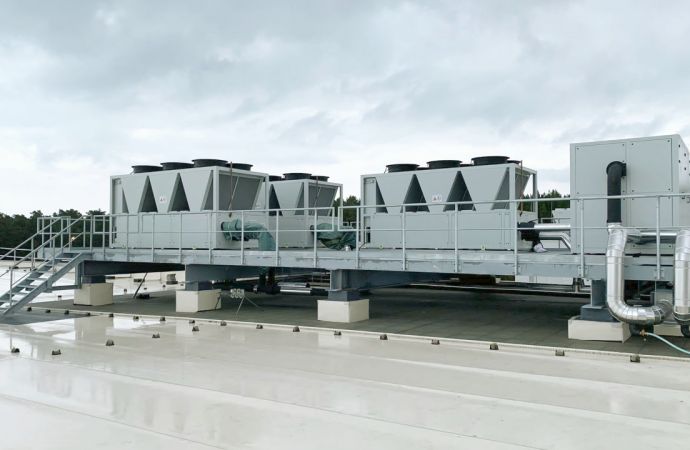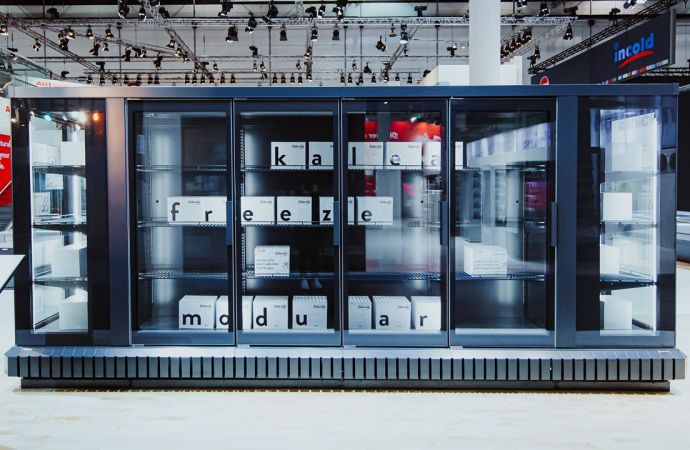The Texas grocery chain reports on the performance of its pioneering 83,000-sq-ft Austin outlet using only propane condensing units for all display cases.

In July 2013, San Antonio, Texas-based grocery powerhouse H.E. Butt Grocery Company (H-E-B) opened a store in Austin, Texas that is regarded as the first U.S. supermarket to employ propane (R290)-refrigerated display cases throughout the store.
As R290 increasingly becomes a viable refrigeration option for new and existing stores in North America, many retailers and their suppliers have become understandably curious about how this initial R290 supermarket has fared over the past six years.
To shed light on that subject, the U.S. Environmental Protection Agency’s GreenChill program hosted a webinar on February 12 featuring Charlie Wernette, principal engineer at H-E-B, and Richard Gilles, senior product leader, distributed solutions for Hussmann, the supplier of H-E-B’s R290 cases.
The R290 pilot was an opportunity for H-E-B, which runs 400 stores in Texas and Mexico, to test a natural refrigerant in the warm temperatures where it operates, Wernette said.
“We were really going after as much from the sustainability standpoint as we could.” Meanwhile, in 2019, the system continues “kicking right along.”
One of H-E-B’s biggest takeaways from the R290 store is that it has experienced zero leaks to date – practically unheard of for stores of this size. That’s even with 346 R290 condensing units in the store (each containing no more than the 150-g of propane charge, the maximum allowed), and packaged condensing units (with evaporator) in the walk-in rooms that each has 350 g of R290, based on permission from the EPA. Keeping to the 150-g limit in the walk-ins would have required too many condensing units, Wernette noted.
Supermarkets in the recent past have typically leaked around 25% of their large-charge (3,000 lbs and over) DX systems containing high-GWP refrigerant; the GreenChill program has helped bring that average down.
“In my mind it is a huge success that we can put in commercial refrigeration system in a supermarket and not have it leak,” Wernette said. H-E-B actually predicted a zero leak rate going into the project,” he added.
Hussmann’s new R290 MicroDS line consists of factory-made, pre-charged, hermetically sealed plug-in systems that have a leak rate of under 1% and a refrigerant charge that is 95%-98% lower than a conventional DX system, Gilles said.
But another prediction – that the system would save 40%-50% in energy consumption – did not prove true. “The energy savings are really on par with other stores,” Wernette said, adding that he had been “chasing energy in a big big way here.”
Wernette pointed to energy usage by pumps in the three glycol loops that remove heat from the condensing units as the reason for missing the energy targets. “It was a lot more than we assumed,” he said.
On the other hand, the store saved energy by putting doors or lids on about 95% all of the display cases,” he said. Moreover, the doors were not found to cause any loss of sales. “Fresh meat has doors and people still shop it.”
Overall maintenance costs at the store were higher than expected due to compressor failures. “We haven't been able to put our finger on why, but keep in mind there's over 360 compressors just for refrigeration in this store,” Wernette said. “That's one thing you have to get over when you're talking about this.” Parts availability has also been a challenge.
Hussmann and HEB have worked to determine the cause of the compressor failures. In its new line of microDS R290 equipment, Hussmann has included a number of changes aimed at correcting this issue and improving efficiency, including phase monitoring, a high-pressure cut-out switch, and high-temperature cut-out for the discharge line, said Gilles.
The capital cost of the H-E-B system was comparable to that of a transcritical CO2 system, said Gilles. (A transcritical system can cost up to 30% more than a conventional system.) However, the simplicity of the R290 system reduces installation costs, noted Gilles.
In my mind it is a huge success that we can put in commercial refrigeration system in a supermarket and not have it leak."
– Charles Wernette, H-E-B
Located above the reach-in cases and inside the coffin cases, the H-E-B store’s condensing units consist of not only a compressor and condenser but also an evaporator.
The store leverages the heat of rejection (1,319,806 BTUs) captured by the glycol loop from the brazed-plate heat exchanger in the condensing units to also deliver cooling for air conditioning and heating in the store via a “temperature stairway,” said Wernette.
Initially, the outside 400-TR HFC chiller with cooling tower brings down the temperature of the glycol to 45°F for condensing the R290 and sends it to the cases. The glycol emerges from the cases at 55°F, and is used in the packaged HVAC equipment on the roof. Its temperature now 65°F, the glycol goes through a radiant slab for cooling and heating in the store.
Combining the air-conditioning and heating with the refrigeration system and also using LED lights earned H-E-B Gold LEED (Leadership in Energy and Environmental Design) certification
Wernette acknowledged that the 150-g charge limitation drives up the number of condensing units and the cost of the overall system. Assuming the International Electrotechnical Commission votes this spring to increase the charge limit to 500 g for A3 (flammable) refrigerants in commercial refrigeration, the standard would still need to be adopted in the U.S. by bodies such as UL and ASHRAE, and by the EPA.“If we could ever do one thing as a country, it would really help a lot to get the number of compressors down,” he noted.
According to Gilles, a 500 g charge would reduce the number of compressors by “one-half, if not two-thirds.”
Wernette also offered caveats for dealing with an R290 line-up, such as checking the equipment regularly. “You need to ensure that the glycol supply is really really clean,” he said. “Small particles will plug up the braze plate heat exchangers.”
He also advised other R290 users to make sure that controls shut down the condensing units upon the loss of the chiller. Early on, when the H-E-B store lost its chiller in a thunderstorm, the units didn’t shut down, a glycol line blew out, and water was dispersed throughout the store.
In addition, he recommended checking the water chemistry of the closed glycol loops, which changes when new water is added.
Despite some of the challenges he faced, Wernette left this webinar audience with number of positive statements about R290. “R290 is a safe and reliable refrigerant when installed properly,” he said. “I can't say enough good things about that. It’s amazing that 150g of it can do what it does from the refrigeration standpoint.”
Will H-E-B use R290 in future stores? “We think it it’s a viable technology, as well as other technologies,” he said. “We’re looking at everything.”
Related stories





